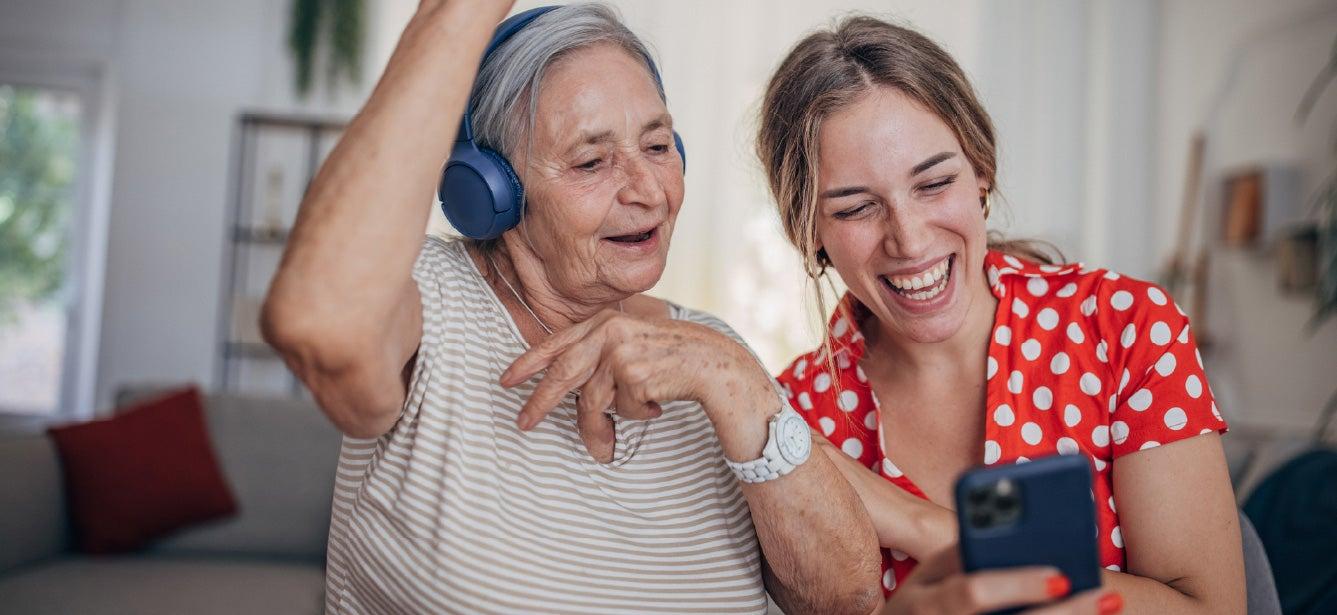On Your Own Doesn't Have to Mean Alone: How to Help Older Adults Stay Socially Connected
4 min read

Loneliness and social isolation are growing problems that can be particularly hard to combat in our pandemic-era world.
Yet a growing body of research shows small group programs, either online or in person, can go a long way toward improving people's sense of social connectedness. And fostering social connectedness is important for everyone's overall health and well-being.
What's the difference between loneliness and social isolation?
Social isolation is an objective measure—defined as “a state in which the individual lacks a sense of belonging socially, lacks engagement with others, has a minimal number of social contacts, and [is] deficient in fulfilling and quality relationships.”1 It speaks to the existence and structure of interpersonal connections and social relationships in one’s life, such as a partner or spouse, a group of friends, or a room/house mate.
Loneliness, commonly defined as “a state of solitude or being alone”2 impacts approximately 20 million older adults. While many people associate loneliness with literally being alone, it is actually about someone's subjective feelings of being alone or isolated.
When discussed together, social isolation and loneliness fit under a larger umbrella concept of “social connectedness.”
Why pay attention to social connectedness for older adults?
Social disconnectedness is a serious and growing public health concern in the United States. Many factors contribute to rising rates of loneliness and social isolation, which negatively impact more people over time and drive up the cost of addressing social connectedness in terms of medical costs and health outcomes. When compared to other leading health indicators in the United States, loneliness impacts a greater number of adults than those classified as obese, severely obese, inactive, and smokers.3
Social disconnectedness has emerged as a substantial predictor of death in the United States, surpassing deaths associated with smoking 15 cigarettes a day, alcohol consumption, obesity, and air pollution.3
Simply put, social disconnectedness puts adults at greater risk for underlying health issues such as dementia, heart disease, and even premature death.
How can I improve social connectedness for older adults?
Reducing social isolation and loneliness among older adults was the focus of a pre-pandemic study we conducted in Washington state with several partners. That study of adults ages 60-101 found up to half of them felt isolated, and one in five did not have the desired amount of contact with trusted people they feel close to.
Some tips we can all follow to improve social connectedness:
- Take time to listen to older adults. Even if someone doesn’t have a large group of family or friends, it only takes one person to make them feel valued, connected, and supported.
- Encourage older adults to be open to new activities and new people. Identifying common interests can form bonds, create purpose, and develop positive relationships.
- Identify ways to introduce meaningful interactions in different settings. Consider phone and online services to bring people together.
How can small groups help with loneliness and social isolation?
Evidence-based health promotion programs have been extensively studied and shown to help older adults better manage their chronic conditions, improve quality of life, and lower health care costs. Just a few examples:
- The Self-Management Resource Center’s Chronic Disease Self-Management Education Programs offer supportive workshops for people with chronic conditions and their caregivers.
- MaineHealth’s A Matter of Balance program helps older adults reduce their fear of falling and teaches them to view falls as controllable while increasing physical activity for strength and balance.
- Western Kentucky University’s Bingocize program engages older adults in a fun game of Bingo while providing health education and exercise.
- The University of Washington’s PEARLS program addresses symptoms of depression and health-related quality of life.
Beyond the well-documented health benefits, though, participating in small group, evidence-based health promotion programs connects older adults with others who may be experiencing similar health conditions or concerns so they don’t feel alone in their health journey. Many of the workshop activities, such as brainstorming how to create a healthier lifestyle, goal-setting together, and opening up about barriers to pursing healthy behaviors, can create a level of sharing that may not naturally happen in other venues.
How do you know if a program is effective against loneliness and social isolation?
To better understand the positive impact these health promotion programs might have on older adults’ loneliness and/or social isolation, measurement is key. Some reliable scales for measuring aspects of social connectedness:4
- Berkman-Sume Social Network Index (SNI)
- Campaign to End Loneliness Measurement Tool (CEL)
- De Jong Gierveld Loneliness Scale
- Lubben Social Network Scale
- UCLA Loneliness Scale (UCLA)
- Upstream Social Interaction Risk Scale (U-SIRS)
When selecting a measurement tool, be sure to consider the tool's:
- appropriateness for the audience
- ability to identify the type of risk the organization is interested in addressing
- relevance to the programs and services being offered to address the risk
The thought of adding yet another task to already-streatched organization staff can be daunting. But gaining this level of understanding through data can add to an organization’s value proposition and improve efforts to secure more funding and expand partnerships.
Sources
1. Shvedko AV, et al. Physical Activity Intervention for Loneliness (PAIL) in community-dwelling older adults: protocol for a feasibility study. Pilot and Feasibility Studies. December 2018. Found on the internet at https://pilotfeasibilitystudies.biomedcentral.com/articles/10.1186/s40814-018-0379-0
2. National Academies of Sciences, Engineering, and Medicine. 2020. Social isolation and loneliness in older adults: Opportunities for the health care system. The National Academies Press. Found on the internet at https://nap.nationalacademies.org/catalog/25663/social-isolation-and-loneliness-in-older-adults-opportunities-for-the
3. Holt-Lunstad, et al. Advancing social connection as a public health priority in the United States. The American Psychologist. 2017. Found on the internet at https://pmc.ncbi.nlm.nih.gov/articles/PMC5598785/
4. Measurement of Social Isolation and Loneliness. National Academies of Sciences, Engineering, and Medicine. 2020. Social isolation and loneliness in older adults: Opportunities for the health care system. The National Academies Press. Found on the internet at https://www.ncbi.nlm.nih.gov/books/NBK557967/



